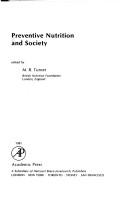| Listing 1 - 10 of 18 | << page >> |
Sort by
|
Book
ISBN: 9242560782 Year: 1987 Publisher: Genève : Organisation mondiale de la santé,
Abstract | Keywords | Export | Availability | Bookmark
 Loading...
Loading...Choose an application
- Reference Manager
- EndNote
- RefWorks (Direct export to RefWorks)
Nutrition surveys --- Nutrition policy --- Politique alimentaire --- Food --- Nutritive Value --- Population Surveillance --- Nutritional Physiological Phenomena --- Health Occupations --- Nutritional Status. --- Nutrition Status --- Status, Nutrition --- Status, Nutritional --- Nutritional status --- Nutritional status. --- Nutritional Status
Book
ISBN: 9242542210 9789242542219 Year: 1988 Publisher: Genève: Organisation mondiale de la santé,
Abstract | Keywords | Export | Availability | Bookmark
 Loading...
Loading...Choose an application
- Reference Manager
- EndNote
- RefWorks (Direct export to RefWorks)
Health Planning Guidelines --- Deficiency Diseases --- diagnosis --- Nutritional Status. --- Voeding --- Melkprodukten --- Nutrition Status --- Status, Nutrition --- Status, Nutritional --- Alimentation/Nutrition --- Produits laitiers --- Nutritional status --- Nutritional status. --- Nutritional Status --- Deficiency Diseases - diagnosis
Book
ISBN: 0471568767 Year: 1991 Publisher: New York (N.Y.): Wiley-Liss
Abstract | Keywords | Export | Availability | Bookmark
 Loading...
Loading...Choose an application
- Reference Manager
- EndNote
- RefWorks (Direct export to RefWorks)
Anthropometry --- Anthropometry. --- Komi --- Nutrition --- Nutritional Status. --- Evaluation. --- 572.087 --- 572.511 --- 612.6 --- 613.2 --- -Alimentation --- Food --- Health --- Physiology --- Diet --- Dietetics --- Digestion --- Food habits --- Malnutrition --- Skeletal remains --- Physical anthropology --- Body size --- 572.511 Posture. Corpulence. Steatopygia --- Posture. Corpulence. Steatopygia --- Nutrition Status --- Status, Nutrition --- Status, Nutritional --- Anthropology, Physical --- Body Composition --- Body Weights and Measures --- Antropometrie --- Voortplanting. Groei. Ontwikkeling --- Voedingsleer. Dieet --- Evaluation --- Health aspects --- -Antropometrie --- -Health --- Alimentation --- -Skeletal remains --- Nutritional Status --- -Nutrition Status --- -Evaluation

ISBN: 0472101463 Year: 1990 Publisher: Ann Arbor : University of Michigan Press,
Abstract | Keywords | Export | Availability | Bookmark
 Loading...
Loading...Choose an application
- Reference Manager
- EndNote
- RefWorks (Direct export to RefWorks)
Anthropometry --- Growth --- Nutritional Status --- Malnutrition --- Nutrition --- Anthropométrie --- methods --- tables --- Growth. --- Nutritional Status. --- Reference Standards. --- 572.087 --- 572.512 --- 612.6 --- 613.2 --- Alimentation --- Food --- Health --- Physiology --- Diet --- Dietetics --- Digestion --- Food habits --- Nutrition disorders --- Starvation --- Skeletal remains --- Physical anthropology --- Body size --- Preparations, Standard --- Standardization --- Standards --- Standard Preparations --- Standards, Reference --- Preparation, Standard --- Reference Standard --- Standard Preparation --- Standard, Reference --- Quality Control --- Nutrition Status --- Status, Nutrition --- Status, Nutritional --- Child Development --- methods. --- Antropometrie --- Metingen en proporties van het menselijk lichaam. Dimensies --- Voortplanting. Groei. Ontwikkeling --- Voedingsleer. Dieet --- Health aspects --- Anthropometry. --- Malnutrition. --- Nutrition. --- Agrotechnology and Food Sciences. Human Nutrition --- tables. --- Human Nutrition Physiology --- Human Nutrition and Health --- Human Nutrition Physiology. --- Human Nutrition and Health. --- Anthropométrie --- Reference Standards
Book
Year: 2020 Publisher: Basel, Switzerland MDPI - Multidisciplinary Digital Publishing Institute
Abstract | Keywords | Export | Availability | Bookmark
 Loading...
Loading...Choose an application
- Reference Manager
- EndNote
- RefWorks (Direct export to RefWorks)
Iodine, a key component of thyroid hormones, is considered an essential micronutrient for proper health at all life stages. Indeed, an inadequate dietary intake of iodine is responsible for several functional and developmental abnormalities. The most serious consequences of iodine deficiency include hypothyroidism, early abortion, low birth weight, preterm delivery, neurocognitive impairment, and mental retardation. On the other hand, the consequences of mild-to-moderate iodine deficiency, such as goiter, are less well understood but represent an important priority for research and public health practice. Over the last several decades, many countries across the globe have introduced mandatory salt iodization programs, which have dramatically reduced the number of iodine-deficient countries. However, despite substantial progress worldwide, mild-to-moderate deficiency is still prevalent even in many developed countries. Thus, the ongoing monitoring of the population iodine status remains crucially important, and attention may need to be paid to vulnerable life stage groups.
iodine deficiency --- schoolchildren --- pregnancy --- iodine prophylaxis --- iodine deficiency disorders --- goiter --- hypothyroidism --- nutraceuticals --- thyroid function --- dietary supplements --- urinary iodine concentration --- iodine --- thyroid hormones --- thyroglobulin --- thyroid stimulating hormone --- preterm birth --- small for gestational age --- iodine nutrition status --- thyroid disease --- thyrotropin --- urine iodine --- epidemiologic studies --- Korean --- Republic of Moldova --- salt --- sodium --- potassium --- population --- Iodine Status --- Food Frequency Questionnaire --- iodized salt --- iodine intake --- dairy intake --- adults --- iodine status --- human milk --- lactation --- infant growth --- iodine schoolchildren --- goitre --- iodised salt --- water iodine --- iodine pregnant women --- cadmium --- myo-inositol --- seleno-L-methionine --- thyroid --- MCP-1 --- CXCL10 --- carnitine --- flavonoids --- melatonin --- omega-3 --- resveratrol --- selenium --- vitamins --- zinc --- n/a --- perchlorate --- Natrium/Iodide symporter --- endocrine disruptors --- review --- drinking and Food --- Hypothyroidism
Book
Year: 2020 Publisher: Basel, Switzerland MDPI - Multidisciplinary Digital Publishing Institute
Abstract | Keywords | Export | Availability | Bookmark
 Loading...
Loading...Choose an application
- Reference Manager
- EndNote
- RefWorks (Direct export to RefWorks)
Iodine, a key component of thyroid hormones, is considered an essential micronutrient for proper health at all life stages. Indeed, an inadequate dietary intake of iodine is responsible for several functional and developmental abnormalities. The most serious consequences of iodine deficiency include hypothyroidism, early abortion, low birth weight, preterm delivery, neurocognitive impairment, and mental retardation. On the other hand, the consequences of mild-to-moderate iodine deficiency, such as goiter, are less well understood but represent an important priority for research and public health practice. Over the last several decades, many countries across the globe have introduced mandatory salt iodization programs, which have dramatically reduced the number of iodine-deficient countries. However, despite substantial progress worldwide, mild-to-moderate deficiency is still prevalent even in many developed countries. Thus, the ongoing monitoring of the population iodine status remains crucially important, and attention may need to be paid to vulnerable life stage groups.
Humanities --- Social interaction --- iodine deficiency --- schoolchildren --- pregnancy --- iodine prophylaxis --- iodine deficiency disorders --- goiter --- hypothyroidism --- nutraceuticals --- thyroid function --- dietary supplements --- urinary iodine concentration --- iodine --- thyroid hormones --- thyroglobulin --- thyroid stimulating hormone --- preterm birth --- small for gestational age --- iodine nutrition status --- thyroid disease --- thyrotropin --- urine iodine --- epidemiologic studies --- Korean --- Republic of Moldova --- salt --- sodium --- potassium --- population --- Iodine Status --- Food Frequency Questionnaire --- iodized salt --- iodine intake --- dairy intake --- adults --- iodine status --- human milk --- lactation --- infant growth --- iodine schoolchildren --- goitre --- iodised salt --- water iodine --- iodine pregnant women --- cadmium --- myo-inositol --- seleno-L-methionine --- thyroid --- MCP-1 --- CXCL10 --- carnitine --- flavonoids --- melatonin --- omega-3 --- resveratrol --- selenium --- vitamins --- zinc --- perchlorate --- Natrium/Iodide symporter --- endocrine disruptors --- review --- drinking and Food --- Hypothyroidism

ISBN: 0521303141 0521029988 0511983247 9780521303149 9780511983245 9780521029988 Year: 1990 Volume: 9 Publisher: Cambridge: Cambridge university press,
Abstract | Keywords | Export | Availability | Bookmark
 Loading...
Loading...Choose an application
- Reference Manager
- EndNote
- RefWorks (Direct export to RefWorks)
In historical accounts of the circumstances of ordinary people's lives, nutrition has been the great unknown. Nearly impossible to measure or assess directly, it has nonetheless been held responsible for the declining mortality rates of the nineteenth century as well as being a major factor in the gap in living standards, morbidity and mortality between rich and poor. The measurement of height is a means of the direct assessment of nutritional status. This important and innovative study uses a wealth of military and philanthropic data to establish the changing heights of Britons during the period of industrialization, and thus establishes an important dimension to the long-standing controversy about living standards during the Industrial Revolution. Sophisticated quantitative analysis enables the authors to present some striking conclusions about the actual physical status of the British people during a period of profound social and economic upheaval, and Height, Health and History will provide an invigorating statistical edge to many debates about the history of the human body itself.
Nutrition --- Diet --- Human growth --- NUTRITIONAL STATUS --- Body Height --- Social Conditions --- History --- trends --- Body Height. --- Nutritional Status. --- 61 <09> --- -Human growth --- -Nutrition --- -Alimentation --- Food --- Health --- Physiology --- Dietetics --- Digestion --- Food habits --- Malnutrition --- Human body --- Developmental biology --- Growth --- Nutrition Status --- Status, Nutrition --- Status, Nutritional --- Body Heights --- Height, Body --- Heights, Body --- trends. --- Geschiedenis van de geneeskunde --- Health aspects --- Great Britain. --- Isle of Man --- United Kingdom --- History. --- United Kingdom. --- Great Britain --- 61 <09> Geschiedenis van de geneeskunde --- -trends. --- -61 <09> Geschiedenis van de geneeskunde --- Alimentation --- Nutritional Status --- 61 <09> History of medicine --- History of medicine --- Arts and Humanities --- Nutrition - Great Britain - History --- Diet - Great Britain - History --- Human growth - Great Britain - History --- Body Height - Great Britain --- Social Conditions - trends - Great Britain

ISBN: 0127044507 9780127044507 Year: 1981 Publisher: London Academic Press
Abstract | Keywords | Export | Availability | Bookmark
 Loading...
Loading...Choose an application
- Reference Manager
- EndNote
- RefWorks (Direct export to RefWorks)
Health education --- Medicine, Preventive --- Nutrition disorders in children --- Nutrition disorders --- Congresses. --- Feeding Behavior --- Health Education --- Nutrition --- Nutritional Status --- Nutrition Disorders --- Public Health --- Sociology, Medical --- Sociology of Medicine --- Medical Sociology --- Nutrition Status --- Status, Nutrition --- Status, Nutritional --- Education, Community Health --- Health Education, Community --- Community Health Education --- Education, Health --- Health --- Diet Habits --- Eating Habits --- Dietary Habits --- Eating Behavior --- Feeding Patterns --- Food Habits --- Behavior, Eating --- Behavior, Feeding --- Behaviors, Eating --- Behaviors, Feeding --- Diet Habit --- Dietary Habit --- Eating Behaviors --- Eating Habit --- Feeding Behaviors --- Feeding Pattern --- Food Habit --- Habit, Diet --- Habit, Dietary --- Habit, Eating --- Habit, Food --- Habits, Diet --- Habits, Dietary --- Habits, Eating --- Habits, Food --- Pattern, Feeding --- Patterns, Feeding --- Children --- Community Health --- Environment, Preventive Medicine & Public Health --- Environment, Preventive Medicine and Public Health --- Health, Community --- Health, Public --- Preventive Medicine --- Education, Public Health Professional --- Nutritional Disorders --- Nutrition Disorder --- Nutritional Disorder --- Congresses --- education --- Diseases --- Public Health. --- Feeding-Related Behavior --- Behavior, Feeding-Related --- Feeding Related Behavior --- Feeding-Related Behaviors
Book
Year: 2020 Publisher: Basel, Switzerland MDPI - Multidisciplinary Digital Publishing Institute
Abstract | Keywords | Export | Availability | Bookmark
 Loading...
Loading...Choose an application
- Reference Manager
- EndNote
- RefWorks (Direct export to RefWorks)
Iodine, a key component of thyroid hormones, is considered an essential micronutrient for proper health at all life stages. Indeed, an inadequate dietary intake of iodine is responsible for several functional and developmental abnormalities. The most serious consequences of iodine deficiency include hypothyroidism, early abortion, low birth weight, preterm delivery, neurocognitive impairment, and mental retardation. On the other hand, the consequences of mild-to-moderate iodine deficiency, such as goiter, are less well understood but represent an important priority for research and public health practice. Over the last several decades, many countries across the globe have introduced mandatory salt iodization programs, which have dramatically reduced the number of iodine-deficient countries. However, despite substantial progress worldwide, mild-to-moderate deficiency is still prevalent even in many developed countries. Thus, the ongoing monitoring of the population iodine status remains crucially important, and attention may need to be paid to vulnerable life stage groups.
Humanities --- Social interaction --- iodine deficiency --- schoolchildren --- pregnancy --- iodine prophylaxis --- iodine deficiency disorders --- goiter --- hypothyroidism --- nutraceuticals --- thyroid function --- dietary supplements --- urinary iodine concentration --- iodine --- thyroid hormones --- thyroglobulin --- thyroid stimulating hormone --- preterm birth --- small for gestational age --- iodine nutrition status --- thyroid disease --- thyrotropin --- urine iodine --- epidemiologic studies --- Korean --- Republic of Moldova --- salt --- sodium --- potassium --- population --- Iodine Status --- Food Frequency Questionnaire --- iodized salt --- iodine intake --- dairy intake --- adults --- iodine status --- human milk --- lactation --- infant growth --- iodine schoolchildren --- goitre --- iodised salt --- water iodine --- iodine pregnant women --- cadmium --- myo-inositol --- seleno-L-methionine --- thyroid --- MCP-1 --- CXCL10 --- carnitine --- flavonoids --- melatonin --- omega-3 --- resveratrol --- selenium --- vitamins --- zinc --- n/a --- perchlorate --- Natrium/Iodide symporter --- endocrine disruptors --- review --- drinking and Food --- Hypothyroidism
Book
Year: 2022 Publisher: Basel MDPI - Multidisciplinary Digital Publishing Institute
Abstract | Keywords | Export | Availability | Bookmark
 Loading...
Loading...Choose an application
- Reference Manager
- EndNote
- RefWorks (Direct export to RefWorks)
Unhealthy food intake and insufficient physical activities are related to obesity or lifestyle diseases, which can cause cardiovascular diseases, ultimately leading to death. However, many people are not aware of the importance of these factors, especially before cardiovascular development, although there are several good food habits that can be adopted. After the development of obesity or lifestyle diseases, nutrition and exercise control with appropriate medical therapies are required. Still, many patients do not recognize the importance of these habits. After cardiovascular disease development, nutrition and exercise with optimal medical and/or interventional therapies are required. However, some patients are not able to control their food intake and physical activities. At the advanced stage of heart failure, many things are restricted, including food intake and quality of life issues. At the end of life, nutritional care should be discussed. This book, Nutrition, Exercise, and End-of-Life Discussion in the Cardiovascular Field, addresses the importance of nutrition control before and after cardiovascular disease development, which consists of 14 peer-reviewed papers that cover the general population and patients with end-stage cardiovascular diseases.
milk intake --- mortality --- stroke --- Bayesian survival analysis --- time-to-event data --- JACC study --- unhealthy eating habits --- accumulation --- obesity --- central obesity --- general Japanese population --- atherosclerotic cardiovascular disease --- polyunsaturated fatty acids --- eicosapentaenoic acid --- docosahexaenoic acid --- arachidonic acid --- descriptive study --- heart failure --- vitamin D --- big data --- heart failure with preserved ejection fraction --- geriatric nutritional risk index --- behavioral modification stages --- nutrition counseling --- patient education --- acute coronary syndrome --- healthy behaviors --- diet --- legumes --- fish --- red/processed meat --- physical activity --- anxiety --- depression --- season --- calorie intake --- hospitalization --- malnutrition --- D-dimer --- intervention --- elderly --- cardiovascular mortality --- selenium --- coenzyme Q10 --- acylcarnitine --- brain natriuretic peptide --- cardiac function --- cardiomyopathy --- carnitine deficiency --- CPT2 --- end-stage kidney disease --- free fatty acid --- hemodialysis --- continuous glucose monitoring --- glucose fluctuation --- intracranial artery stenosis --- mean amplitude of glycemic excursions --- standard deviation --- palliative care --- end-of-life care discussion --- advance care planning --- food intake --- artificial nutrition --- onco-cardiology --- nutrition status --- cancer --- acute myocardial infarction --- plant-based dietary patterns --- grains --- nuts --- fruits --- vegetables --- cardiovascular disease --- n/a
| Listing 1 - 10 of 18 | << page >> |
Sort by
|

 Search
Search Feedback
Feedback About UniCat
About UniCat  Help
Help News
News